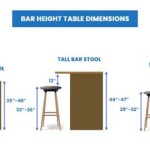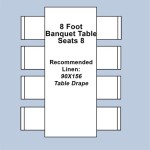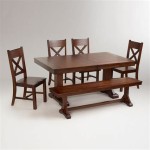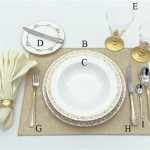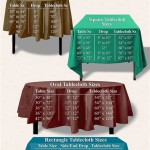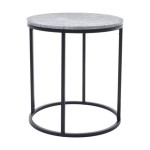Outdoor Ping Pong Table Plans: A Comprehensive Guide to Free DWG Resources
The allure of outdoor recreation is undeniable, and the game of ping pong, also known as table tennis, offers a readily accessible, engaging activity for individuals of all ages and skill levels. Building an outdoor ping pong table can be a rewarding DIY project, enabling customized dimensions, materials, and aesthetic preferences. Digital plans, particularly those in DWG (Drawing) format, provide a valuable resource, offering detailed schematics and specifications. This article explores the availability, utility, and considerations related to free DWG resources for constructing an outdoor ping pong table.
DWG files, native to AutoCAD software, represent a standard in computer-aided design (CAD). They contain precise geometric data, layers, and annotations, allowing for accurate visualization and manipulation of designs. Accessing free DWG plans for an outdoor ping pong table can significantly streamline the construction process, minimizing errors and optimizing material usage. However, it is crucial to understand the limitations and nuances associated with these freely available resources.
Understanding DWG Files and Their Benefits for Ping Pong Table Construction
The DWG file format is a proprietary binary file used for storing two- and three-dimensional design data and metadata. Its extensive use in engineering, architecture, and manufacturing makes it a valuable asset for DIY projects where precision is important. When applied to ping pong table construction, DWG files offer several key benefits. First, they provide exact dimensions for all components, ensuring that the table adheres to standard regulations and offers a consistent playing experience. Second, the layered structure of DWG files allows for selective viewing of different aspects of the design, such as the frame, playing surface, or support structure. Third, the ability to edit DWG files in CAD software enables users to customize the design to their specific needs and preferences, such as adjusting the size of the table, modifying the leg design, or incorporating personal branding.
Accessing and utilizing DWG files requires appropriate software. AutoCAD is the industry-standard application, but numerous free or open-source CAD programs are available that support the DWG format. These alternatives offer varying levels of functionality, but can be sufficient for viewing, measuring, and making minor modifications to free ping pong table plans. Some popular free CAD options include FreeCAD, LibreCAD, and DraftSight.
When exploring free DWG resources, it is essential to verify their accuracy and completeness. Not all free plans are created equal. Some may be incomplete, outdated, or contain errors that can compromise the structural integrity or playability of the finished table. A thorough review of the plan's dimensions, material specifications, and construction details is crucial before commencing the project. Cross-referencing the plan with standard ping pong table dimensions and construction guidelines is also recommended.
Furthermore, consideration should be given to the intended user's skill level. Some DWG plans may be designed for experienced woodworkers or metalworkers, while others are tailored for beginners. Understanding the complexity of the plan and the required tools and techniques is essential for successful project completion. Supplemental resources, such as online tutorials and step-by-step guides, can be valuable assists for those with limited experience.
Sources for Free Outdoor Ping Pong Table DWG Plans
Locating free DWG plans for outdoor ping pong tables requires diligent research and careful evaluation of available resources. Several potential sources exist, each with its own strengths and limitations.
Online repositories and CAD communities often host a variety of user-submitted designs, including ping pong table plans. Websites dedicated to DIY projects and woodworking may also offer downloadable DWG files. However, these resources may vary greatly in quality and accuracy. It is important to carefully vet the plans before utilizing them, paying close attention to the source's reputation and the plan's user ratings and reviews. Some examples of websites that may host DWG plans, although availability is not guaranteed, include GrabCAD, Thingiverse, and Instructables. Searching specific CAD forums and communities can also yield valuable results.
Manufacturers of ping pong table components or outdoor recreational equipment may occasionally offer free DWG plans for promotional purposes. These plans are often professionally designed and highly accurate, but may be limited in scope or tailored to specific products. Checking the websites of relevant manufacturers and suppliers can be a worthwhile endeavor. It is also important to note that some manufacturers might offer more basic PDF plans for free, with the DWG version being available at a cost.
Educational institutions, such as vocational schools and technical colleges, may have student projects or design exercises that involve ping pong table construction. These projects may be available for free download from the institution's website or through online repositories. The quality and accuracy of these plans can vary, but they often provide valuable insights into the design and construction process. Contacting the relevant departments directly can be a good way to find these resources. However, remember that student projects may not always be fully optimized for durability and long-term outdoor use.
Regardless of the source, it is essential to understand that free DWG plans are often provided "as is," without any guarantees or warranties. Users assume all responsibility for verifying the accuracy and completeness of the plan and ensuring that the construction process is safe and compliant with all applicable regulations.
The use of a digital plan is often combined with a physical prototype or "test cut" - this allows the user to see how the pieces fit together before committing to a large amount of expensive material. The test cut can highlight potential issues in a simplified, smaller-scale setting. This is of particular benefit when dealing with free plans, as adjustments might need to be made.
Considerations for Outdoor Ping Pong Table Design and Material Selection
Building an outdoor ping pong table presents unique challenges compared to constructing an indoor table. The design and material selection must account for exposure to the elements, including sunlight, rain, wind, and temperature fluctuations. The choice of materials directly impacts the table's durability, weather resistance, and overall lifespan.
The playing surface is arguably the most critical component of an outdoor ping pong table. Traditional wood surfaces are susceptible to warping and degradation when exposed to moisture and sunlight. Alternative materials, such as aluminum composite panels (ACP), high-pressure laminates (HPL), or concrete, offer superior weather resistance. ACP consists of two thin aluminum sheets bonded to a non-aluminum core, providing a lightweight, rigid, and weather-resistant surface. HPL is a durable laminate made of multiple layers of resin-impregnated paper, offering excellent scratch and impact resistance. Concrete, while heavy, provides an exceptionally robust and weather-resistant playing surface. When selecting a surface material, consider its cost, weight, workability, and aesthetic appeal.
The frame and support structure must also be constructed from weather-resistant materials. Pressure-treated lumber is a common choice for outdoor applications, as it is resistant to rot and insect infestation. However, pressure-treated lumber can leach chemicals into the environment, so it is important to use appropriate safety precautions during cutting and handling. Alternatively, metal frames offer superior strength and durability. Steel frames should be powder-coated or galvanized to prevent rust. Aluminum frames are lightweight and naturally corrosion-resistant, making them an excellent choice for outdoor applications. When designing the frame, ensure that it provides adequate support for the playing surface and is stable enough to withstand wind loads.
The hardware used to assemble the table should also be weather-resistant. Stainless steel screws, bolts, and washers are ideal for outdoor applications, as they are highly resistant to corrosion. Avoid using galvanized or plated hardware, as these coatings can degrade over time, leading to rust and failure. The net and net posts should also be made from weather-resistant materials, such as nylon or stainless steel. Some designs might opt for a permanently fixed net and posts, while others will allow for the net to be removed for storage during inclement weather.
Finally, consider the table's portability and storage. If the table will be moved frequently, consider incorporating wheels or casters into the design. Folding tables are also available, allowing for compact storage when not in use. When storing the table outdoors, use a waterproof cover to protect it from the elements. Regular cleaning and maintenance can further extend the lifespan of the table.
By carefully selecting materials and incorporating appropriate design features, it is possible to build an outdoor ping pong table that provides years of enjoyment.

Ping Pong Table 01 Archweb

Ping Pong Cad Blocks Autocad Drawings Free

Ping Pong Cad Blocks Autocad Drawings Free

Table Tennis In Autocad Cad Free 15 89 Kb Bibliocad

Ping Pong Cad Blocks Autocad Drawings Free

Ping Pong 1 Dwg Free Cad Blocks

Table Tennis Game Detailing Plan Cadbull

Table Tennis Tables Are Regulated Playing Surfaces Designed 60 Off

Table Tennis 3d 01 Archweb

Ping Pong 1 Dwg Free Cad Blocks

